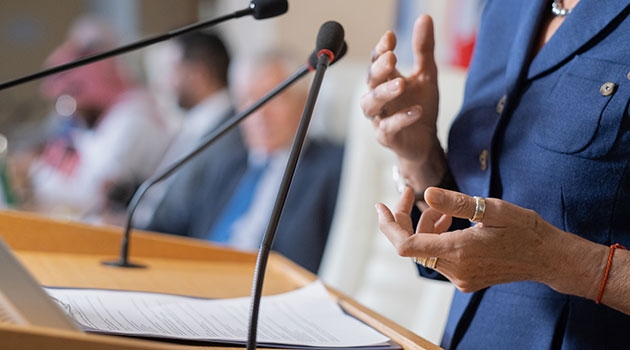Gender equality in the Riksdag can be improved
In many ways, the Riksdag is an equal workplace, but research by Uppsala University shows that women face multiple obstacles in their work. A worrying sign is that representation of women in management positions has fallen since the change in government.
Government. Photo: Mikael Wallerstedt
Since 2018, research has been under way at Uppsala University into the Riksdag as a gendered workplace.
“Previous research has focused on the proportion of women and men at a parliament and the type of legislation and debates that women and men focus on. We wanted to look at the Riksdag as a workplace. Sweden has a high proportion of women in the Riksdag, but are they treated in the same way as men? Do they enjoy the same conditions for carrying out their duties?” explains Josefina Erikson, researcher at the Department of Government.
She and her colleague Cecilia Josefsson have been collaborating with the Riksdag's equality group for several years, something which has been a great help in obtaining data.
Obstacles at work
A survey from 2016–2017 showed that the Riksdag is in many respects an equal workplace. Women and men both feel that they can influence politics, with women also feeling that they are generally able to participate in the debate. But there are also obstacles at work:
- Women perceive the demands placed on them as being greater.
- Women are more worried about making mistakes in their work duties.
- Women are more exposed to various types of negative behaviour, such as being interrupted during meetings, receiving comments about their appearance or sexist jokes.
“These are the three areas in which we have identified significant differences between the sexes. Women tell us that it is difficult to join the debate on certain issues, to be listened to and taken seriously. They do a great deal of preparation, for example on research reports and statistics. This is an aspect that women raise, but men can also see them carrying it out,” continues Erikson.
Situation among female leaders
Government. Photo: Mikael Wallerstedt
Their latest study focuses on leadership in the Riksdag. A survey was sent out to all MPs in 2020–2021, and the researchers essentially interviewed everyone who held a leadership position in the Riksdag – speakers, committee chairs and party group leaders. The study shows that the situation is not worse for female leaders as might have been imagined.
“Female leaders in the Riksdag enjoy their duties and feel that they are generally treated respectfully, but we see clear gender differences in line with previous studies,” notes Erikson.
“They have to fight harder to be taken seriously and respected. There are stories that are typical of female leaders and that don’t occur at all among male leaders. Their leadership is questioned and meetings are obstructed, with lots of formalities being pointed out to show that they are not competent in their leadership, for example.”
Feminine leadership ideal
One interesting result from the study is the leadership ideal that prevails in the Riksdag. A masculine-coded leadership ideal emphasises characteristics seen as masculine, such as being assertive and efficient, which can hinder women who want to achieve leadership positions.
In the Riksdag, however, it was not a masculine-coded leadership ideal that dominated, but an ideal that emphasises qualities seen as feminine – cooperation, caring about social aspects and listening to others.
“Despite the fact that the leadership ideal in the Riksdag seems to be less masculine-coded than in other areas, it is still the case that the female leaders experience obstacles. They are still questioned,” notes Erikson.
Less representation in committees
Gender equality in the Swedish Riksdag ranks positively internationally. In terms of women's representation, Sweden ranks tenth in the world at around 46 percent.
“Sweden has had high levels of representation for a long time. Since the ‘90s, we have had more than 40 percent women in the Riksdag, which is quite unique,” continues Erikson.
Photo: Mikael Wallerstedt
For that reason, she is concerned about recent developments in the Riksdag. Since the election, the percentage of women has dropped considerably among those who hold the position of chair or deputy chair in the committees.
“Following the election, barely 30 percent of the committee chairs are women, and it has not been this low for a very long time. In fact, the governing parties do not have a single woman in these positions; of their 16 appointments, all are men.”
New gender equality action plan
The Riksdag's equality group has also been revamped after the election and will soon produce a new action plan. Collaboration with them is continuing and the researchers are planning several new studies about leadership, politics and gender equality – now with a broadened focus that will include the study of ministers.
“It's fun to be able to collaborate with the gender equality group, because we see that our research has consequences, that they use it and try to improve things.”
There is still much work to be done. Change takes time in an organisation that has been male-dominated for several hundred years.
“The situation is not worse in the Riksdag than in other workplaces – there are the same challenges there as in other places. But one concrete issue during this term of office is to review the distribution of women and men among the committee chairs,” concludes Erikson.
Annica Hulth

